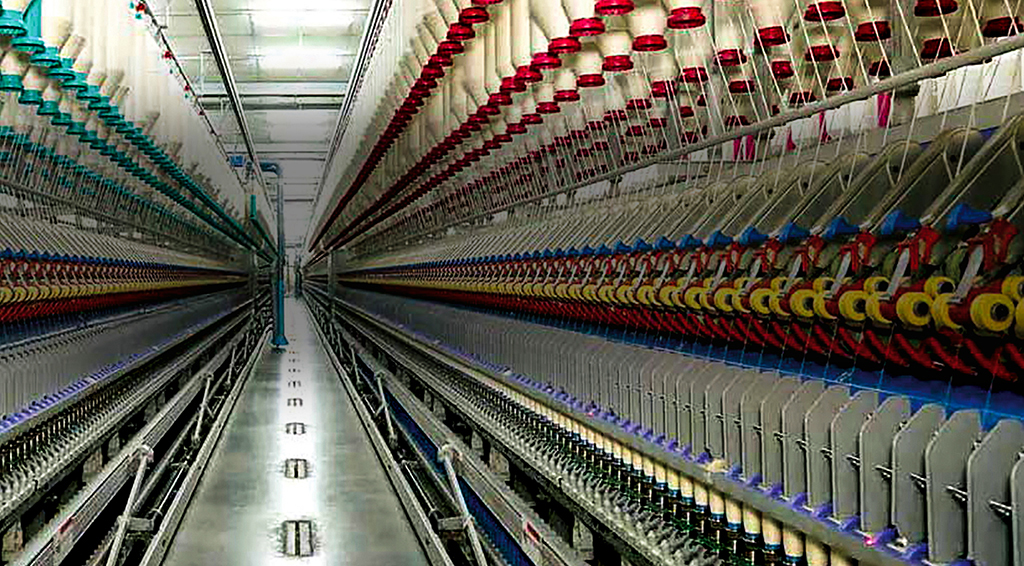After being hit hard by COVID, India’s textile industry is well on course on the road to recovery. During the pandemic, the domestic textiles and apparels industry slumped to US $75 billion after peaking at US$ 106 billion in FY2020. However, government initiatives to bolster the sector have raised hopes of the sector growing to $300 billion by 2025-26, a growth of 300% in next 2 years.

There has been a remarkable turnaround in Technical Textiles. In terms of value, of technical textiles imports exceeded exports by ₹1058 crore in FY20 while in FY21 exports exceeded imports by ₹2998 crore.
These are some major findings of a report titled Textile Industry: Trends and Prospects released by Infomerics Valuation and Rating Pvt Ltd., the well-known SEBI-registered and RBI-accredited financial services credit rating company.
The report analyses the factors that have affected the sector’s performance. It notes that apart from the impact of COVID, other reasons which are acting as bottlenecks are, high tariffs faced by Indian exporters in key markets, such as the European Union, and logistics. The report compares the high tariffs in the EU with zero duty access given to competing nations like Bangladesh, Sri Lanka, Pakistan, and Turkey, which affected export performance. The report also highlights logistics as one of the major constraints with Indian exporters. For comparative purposes, the turnaround time (TAT) (from order to delivery) is 50 days for Bangladesh and 63 days for India, whereas time taken to reach port is 1 day for Bangladesh and 7-10 days for India.
Turnround in Technical Textiles
India has transitioned from being a net importer, in terms of value, of technical textiles (imports exceeded exports by ₹1058 crore) in FY20 to a net exporter of the same (exports exceeded imports by ₹2998 crore) in FY21.
In January 2019, 207 HSN Codes have been classified and notified as technical textiles with a view for ease of doing business.
The Government has earlier approved the proposal for creation of National Technical Textiles Mission (NTTM) for a period of 4 years (2020-21 to 2023-24) with an outlay of ₹1480 crores.
Indian technical textiles market could increase at CAGR of 7.6 per cent in Asia-Pacific to reach at USD 23.3 billion in 2027, up from USD 14 billion in 2020, says the report. Currently, Indian technical textiles constitute approximately 8 per cent of the global share.
A target has been taken by the Govt, to increase the export of technical textiles to five times in three years, from the current approximately USD 2 billion to USD 10 billion.
Other Government interventions
The Infomerics report outlines the various initiatives taken by the government to help and bolster the sector.
Historically such initiatives include introduction of Technology Mission on Cotton (TMC), Technology Upgradation Fund Scheme (TUFS), Scheme for Integrated Textile Park (SITP), etc. Some of the recent measures include National Technical Textiles Mission (NTTM) for a period of 4 years (2020-21 to 2023-24) with an outlay of ₹1480 crores.
State level action is also visible whereby Tamil Nadu, one of the largest T&A hubs in the country, signed up for Techtextil India 2021 – the leading International Trade Fair for Technical Textiles and Nonwovens. It notes that this is likely to open doors for innovation and reduces foreign dependence.
Other measures include Scheme for Capacity Building in Textile Sector (SAMARTH) to address the shortage of skilled workers in the textile sector with a target of training 10 lakh persons.
Challenges
Fund allocation is a major limitation for the textile industry, says the report, pointing out that the Finance Ministry approved only ₹3,631.64 crores for the Textile Ministry as against proposed outlay of ₹16,883 crore during the FY22.
Further, the industry has been lately witnessing low manufacturing activity accompanied by high prices for the final product reflected in the annual NIC-2 digit and sectoral indices of industrial production wherein the index for ‘manufacturing of textiles’ has fallen below the 100 marks, settling at 91.1 for the first time in almost a decade. The yearly wholesale price index for ‘manufacturing of textiles’ has been nearing the 118-point mark which is 6-7 notches above the decadal average of approximately 112.
The report also highlights other generic factors like weakened consumer demand or production networks; obsolete technology, inflexible labour laws, infrastructure bottlenecks, and fragmented industry; major role of the unorganized and small players hit by triple whammy of demonetization, rolling out of GST and the COVID-19 pandemic.
More specifically, it outlines industry risk factors, which relate to GST issue, gap in Proposed Outlay and Amount Approved, Low Performance and High Price, and Poor Textile Machinery Performance.
The way ahead
The Infomerics report stress that the industry needs to command premium prices; target niche products and markets; need to redesign products in higher value-added segments. It also needs to focus on regional and cluster subsidies, technology upgradation and skill development subsidies for sustained development. Investment in value added services, e.g., marketing, warehouse rentals, logistics, courier, other product fulfilment costs constitute a pre-requisite for the sector going to scale.
However, the report is optimistic about the potential for growth and structural transformation of the textile industry. India’s textile industry is one of the largest in the world with a large unmatched raw material base and manufacturing strength across the value chain. It is the second largest producer of man-made fibre (MMF) after China. The textiles and apparel (T&A) industry contribute 2.3 per cent to the country’s GDP, 13 per cent to industrial production and 12 per cent to exports.
The report recommends that the industry needs to effectively address the risk factors, the distinctive peculiarities of the sector and the integration of the textile value chain for steady growth and consolidation of the Indian textiles position in the comity of nations.